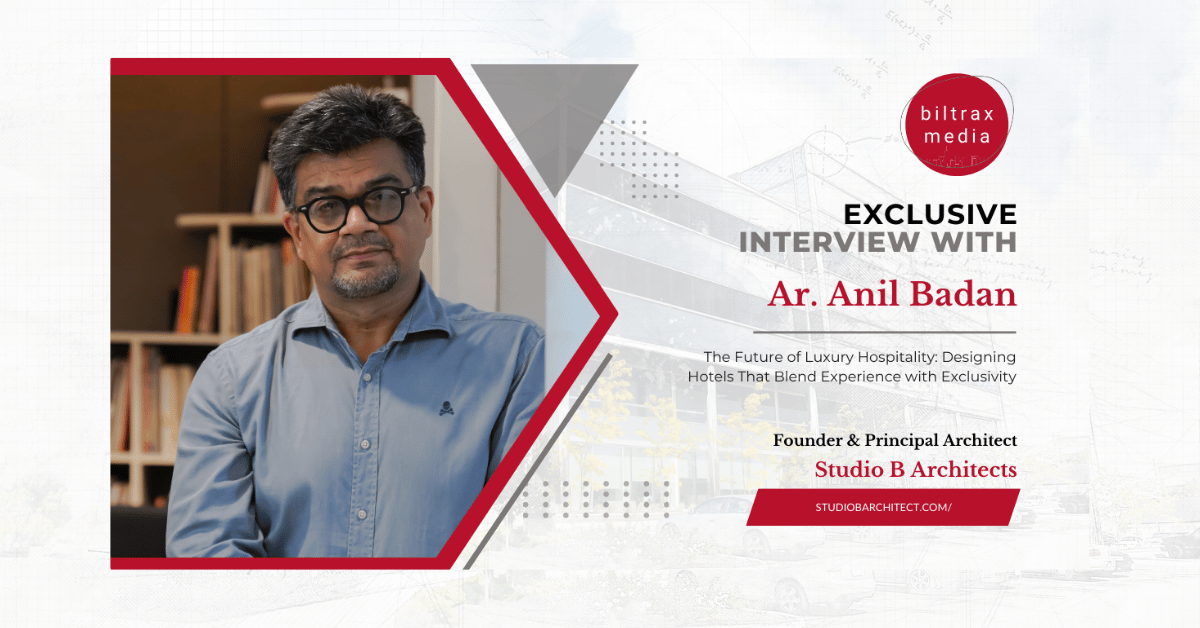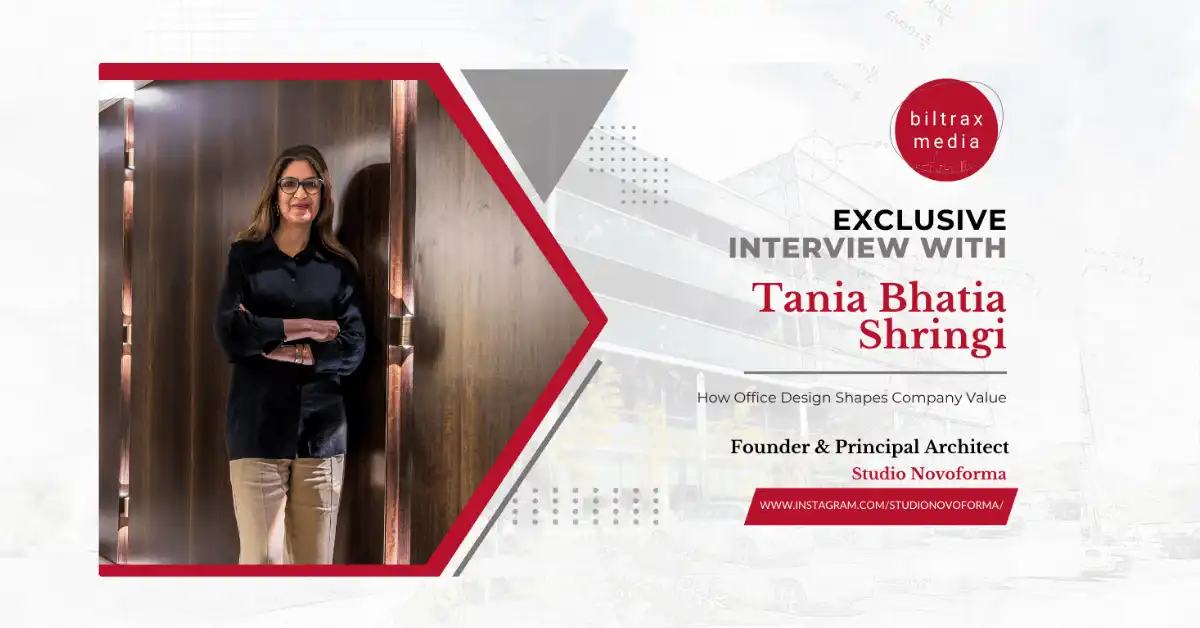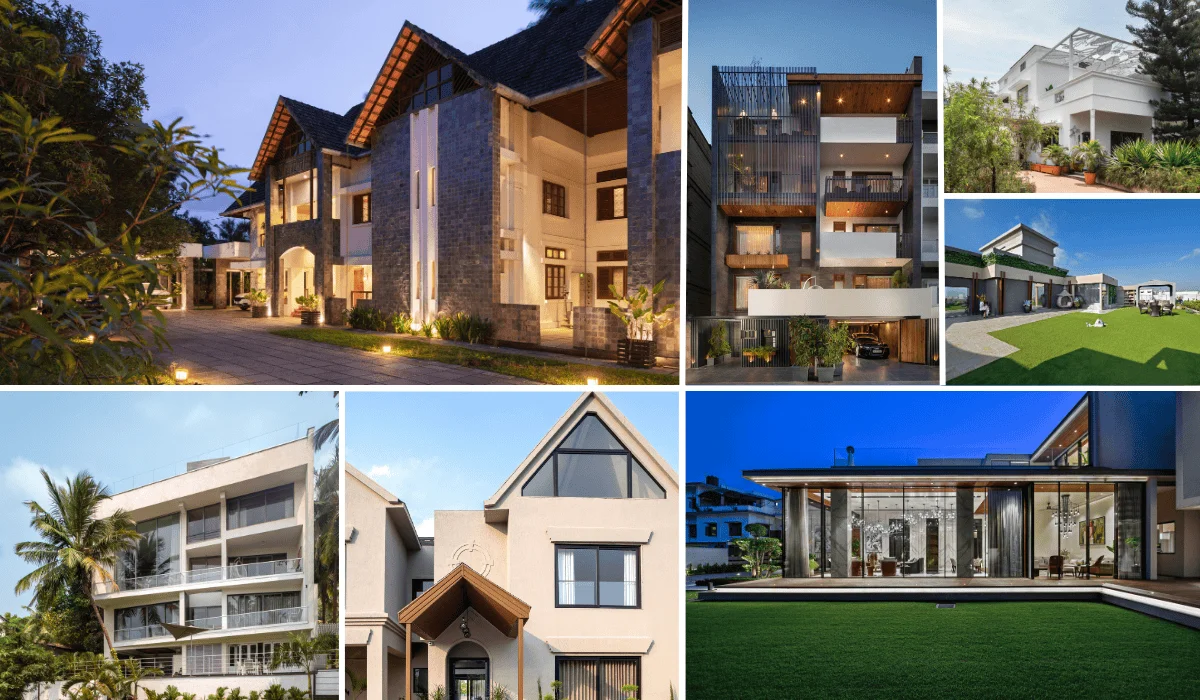Founded in 2015, ‘Manoj Patel Design Studio’ (MPDS) is a Gujarat based firm spearheaded by Manoj Patel. Combining sustainable building designs, recyclable materials and local construction techniques, MPDS aims to build eco-friendly spaces and further sustainable technologies. In the subsequent article, Manoj talks about the intricate aspects of low carbon footprint designs. He also talks about the role of the construction sector in current times.
It is common knowledge that traditional practices fused with modern aesthetics is the need of the hour. But with mass-production of glass, steel, aluminium and similar hazardous materials; traditional ways take backstage. Traditional and sustainable methods typically limit to private residences and small-scale projects. While they impart great design value to projects, meaningful change remains at bay unless these technologies find use in large-scale and mainstream projects.
Manoj Patel Design Studio draws eco-friendly designs and techniques, and implements them across their work. While siring sustainable and zero carbon footprint designs makes a stand, it also grapples with challenges. Developing and innovating design that eliminates negative impact on ecology is crucial. Even more important is to develop skills and technology that can produce the same. Lastly, communicating and spreading awareness amongst clients who commission work to designers is imperative.

While terracotta clay tiles are traditionally used on roofs, Manoj has innovated products and systems that extend its functions and usage.



The main challenge involves replacing expensive and energy-consuming materials with their sustainable counterparts. Presently many expensive and energy-consuming materials are being put to use for various applications like cladding, unmindful of its impact on the environment. Manoj says, “If these materials are replaced with vernacular materials such as clay roof tiles, it would be an effective alternate sustainable approach for Indian climates, minimizing heat in houses. When vernacular materials are used on large surface areas, it balances the urban heat island effect for its surroundings.” While terracotta clay tiles are traditionally used on roofs, Manoj has innovated products and systems that extend its functions and usage. In addition to being used in facades, the clay tiles found their purpose as planters, replacing the plastic pots, providing natural cooling and longer water retention.

“To revive these materials and encourage the local craftsmen to recommence their work, we started creating eco-friendly products and making use of it in various applications for our projects”.
For Keshav Kutir, a restaurant in Vadodara, reused corrugated metal and waste thermocol for insulation and pocket-friendly design. On the other hand, fabricated after months of research was the discotheque Hi-Hats in Vadodara. The design team used scrap materials like tin lids, barrels, dumped car seats, waste beer bottles for its design. Waste and recycled materials, damaged floor tiles, metal pipes became the face of Shefali fashion boutique in Vadodara. This thus created a palette of contrasting tones.
Beyond ecological materials being favourable for the climate and environment, the usage of terracotta tiles has generated employment within local vendors. In India, the use of vernacular materials is diminishing. “Many factories that manufacture clay roof tiles have shut owing to less demand,” states Manoj. These vernacular materials also have longer life spans than the prevailing high energy consuming materials nowadays.

Waste and recycled materials, damaged floor tiles, metal pipes became the face of Shefali fashion boutique in Vadodara creating a palette of contrasting tones.
Manoj voices, “To revive these materials and encourage the local craftsmen to recommence their work, we started creating eco-friendly products and making use of it in various applications for our projects”. The line of work doesn’t end by selecting local materials. Materials need a thorough checking for durability and quality. Manoj points out, “For any new product that we create, we research and experiment the material thoroughly in the initial stages at our studio for six months before utilizing it and executing the final outcome”.
When asked about spreading his practise beyond Gujarat, Manoj answered “Yes, in the future we plan to scale our practice beyond western India. We would like to bring sustainable techniques like the clay roof tiles into the market in different architecture and interior projects. Also these sustainable techniques will help generate employment for the local artist doing such hand craft works”. Manoj sums up the conversation “We design all types of projects from small scale residences to large scale commercial projects, considering our aim to maintain climate control in the building sector”.
Manoj Patel Design Studio
Website: manojpateldesignstudio.com
E-Mail: manojpatelstudio@gmail.com
Contact: +91 99243 76644
Biltrax Construction Data is tracking 11000+ projects on its technology platform for its Clients. Email contact@biltrax.com to subscribe and generate business leads.
Discover more from Biltrax Media, A Biltrax Group venture
Subscribe to get the latest posts sent to your email.
































